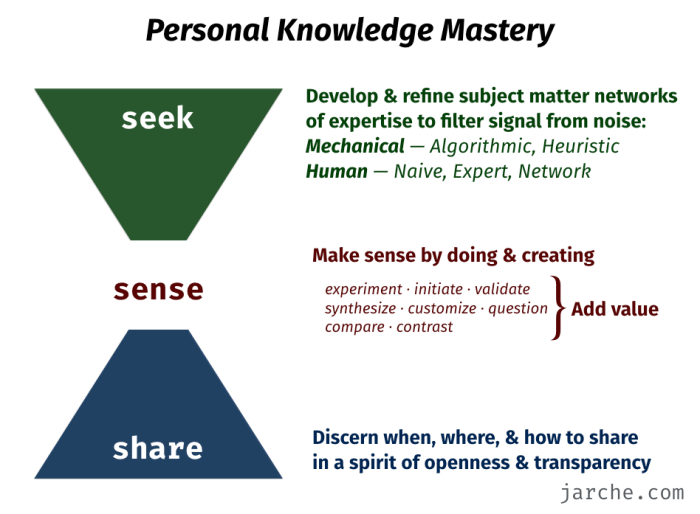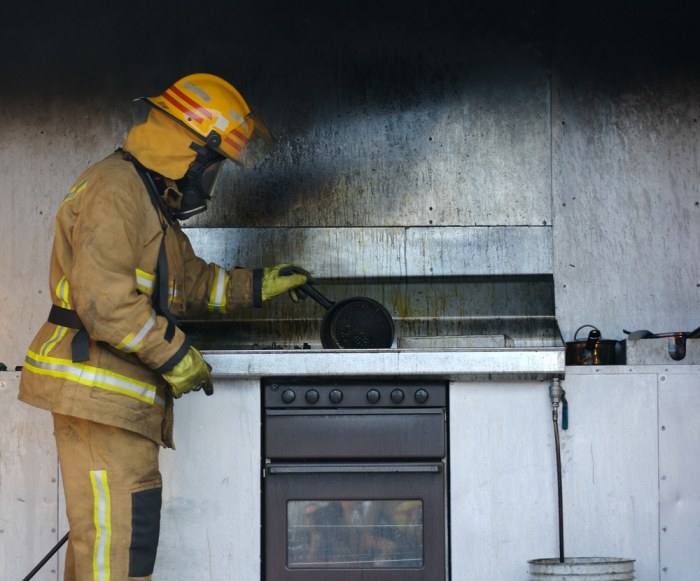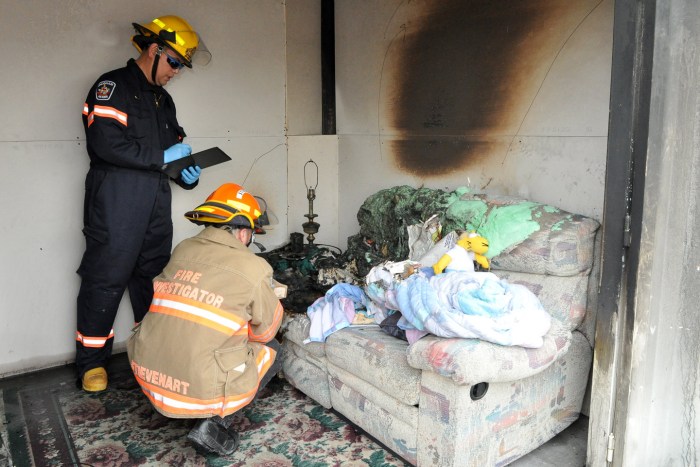The fire investigator uses knowledge filters to evaluate and analyze evidence, a crucial process in determining the origin and cause of a fire. These filters, derived from experience, training, and scientific principles, guide the investigator’s interpretation of complex data, ensuring accurate and reliable conclusions.
Knowledge filters encompass various types, each with distinct characteristics and applications. They include pattern recognition, mental models, heuristics, and biases, which influence the investigator’s perception and reasoning.
1. Knowledge Filters for Evaluating and Analyzing
Knowledge filters are cognitive structures that guide the evaluation and analysis of information by fire investigators. They influence how investigators perceive, interpret, and make decisions about fire scenes. Knowledge filters can be based on education, experience, training, and personal biases.
Fire investigators use various types of knowledge filters, including:
- Causal reasoning:Investigators use their understanding of fire dynamics and behavior to determine the most likely cause of a fire.
- Pattern recognition:Investigators look for patterns in fire scenes that can provide clues about the origin and spread of the fire.
- Mental models:Investigators create mental representations of fire scenes to help them understand the sequence of events that led to the fire.
Knowledge filters are essential for fire investigators, as they help them to make informed decisions about fire scenes. However, it is important to be aware of the potential biases and limitations of knowledge filters.
2. Types of Knowledge Filters
Fire investigators use a variety of knowledge filters, including:
- Causal reasoning:Investigators use their understanding of fire dynamics and behavior to determine the most likely cause of a fire.
- Pattern recognition:Investigators look for patterns in fire scenes that can provide clues about the origin and spread of the fire.
- Mental models:Investigators create mental representations of fire scenes to help them understand the sequence of events that led to the fire.
- Experience-based filters:Investigators use their experience to identify and evaluate potential fire causes.
- Training-based filters:Investigators use their training to learn about fire dynamics and behavior, and to develop skills in fire scene investigation.
- Personal biases:Investigators may have personal biases that can influence their interpretation of fire scenes.
Each type of knowledge filter has its own advantages and limitations. Causal reasoning is a powerful tool for determining the most likely cause of a fire, but it can be difficult to apply in complex fire scenes. Pattern recognition can be a helpful way to identify clues about the origin and spread of a fire, but it can be difficult to distinguish between meaningful patterns and random noise.
Mental models can be a useful way to understand the sequence of events that led to a fire, but they can be difficult to create and validate.
3. Application of Knowledge Filters: The Fire Investigator Uses Knowledge Filters To Evaluate And Analyze

Fire investigators use knowledge filters to evaluate and analyze fire scenes in a variety of ways.
- Causal reasoning:Investigators use causal reasoning to determine the most likely cause of a fire. They consider the fire scene evidence, the witness statements, and their knowledge of fire dynamics and behavior to develop a hypothesis about the cause of the fire.
They then test their hypothesis by conducting experiments and gathering additional evidence.
- Pattern recognition:Investigators use pattern recognition to identify clues about the origin and spread of a fire. They look for patterns in the fire damage, the burn patterns, and the debris at the fire scene. These patterns can help investigators to determine where the fire started and how it spread.
- Mental models:Investigators use mental models to create a mental representation of the fire scene. This mental model helps investigators to understand the sequence of events that led to the fire. Investigators can use their mental model to test different hypotheses about the cause of the fire and to develop a plan for investigating the fire.
Knowledge filters are essential for fire investigators, as they help them to make informed decisions about fire scenes. However, it is important to be aware of the potential biases and limitations of knowledge filters.
4. Challenges in Using Knowledge Filters

There are a number of challenges associated with using knowledge filters.
- Biases:Knowledge filters can be biased by the investigator’s education, experience, training, and personal beliefs. These biases can lead to the investigator making incorrect conclusions about the fire scene.
- Limitations:Knowledge filters are limited by the investigator’s knowledge and experience. The investigator may not be aware of all of the possible causes of a fire, or they may not be able to recognize all of the patterns in the fire scene.
This can lead to the investigator making incorrect conclusions about the fire scene.
- Complexity:Fire scenes can be complex, and it can be difficult to apply knowledge filters to them. The investigator may need to use multiple knowledge filters to reach a conclusion about the fire scene.
It is important to be aware of the challenges associated with using knowledge filters. By being aware of these challenges, the investigator can take steps to minimize their impact on the investigation.
5. Future Developments in Knowledge Filters

There are a number of developments in knowledge filters that are expected to have a significant impact on fire investigation in the future.
- Artificial intelligence:Artificial intelligence (AI) is being used to develop new knowledge filters that can help investigators to identify and evaluate fire scene evidence. These AI-powered knowledge filters are expected to be more accurate and efficient than traditional knowledge filters.
- Virtual reality:Virtual reality (VR) is being used to create realistic simulations of fire scenes. These VR simulations can help investigators to visualize the fire scene and to test different hypotheses about the cause of the fire.
- Data analytics:Data analytics is being used to analyze large amounts of data from fire scenes. This data can be used to identify patterns and trends that can help investigators to determine the cause of the fire.
These developments in knowledge filters are expected to have a significant impact on fire investigation in the future. These new tools will help investigators to be more accurate and efficient in their investigations.
FAQ Insights
What are the different types of knowledge filters used by fire investigators?
Fire investigators employ various types of knowledge filters, including pattern recognition, mental models, heuristics, and biases.
How do knowledge filters influence the fire investigator’s analysis?
Knowledge filters shape the investigator’s perception and reasoning, guiding their interpretation of complex data and influencing their conclusions.
What are the challenges associated with using knowledge filters?
Challenges include potential biases, limitations in applicability, and the need for continuous training and refinement to ensure accuracy and reliability.